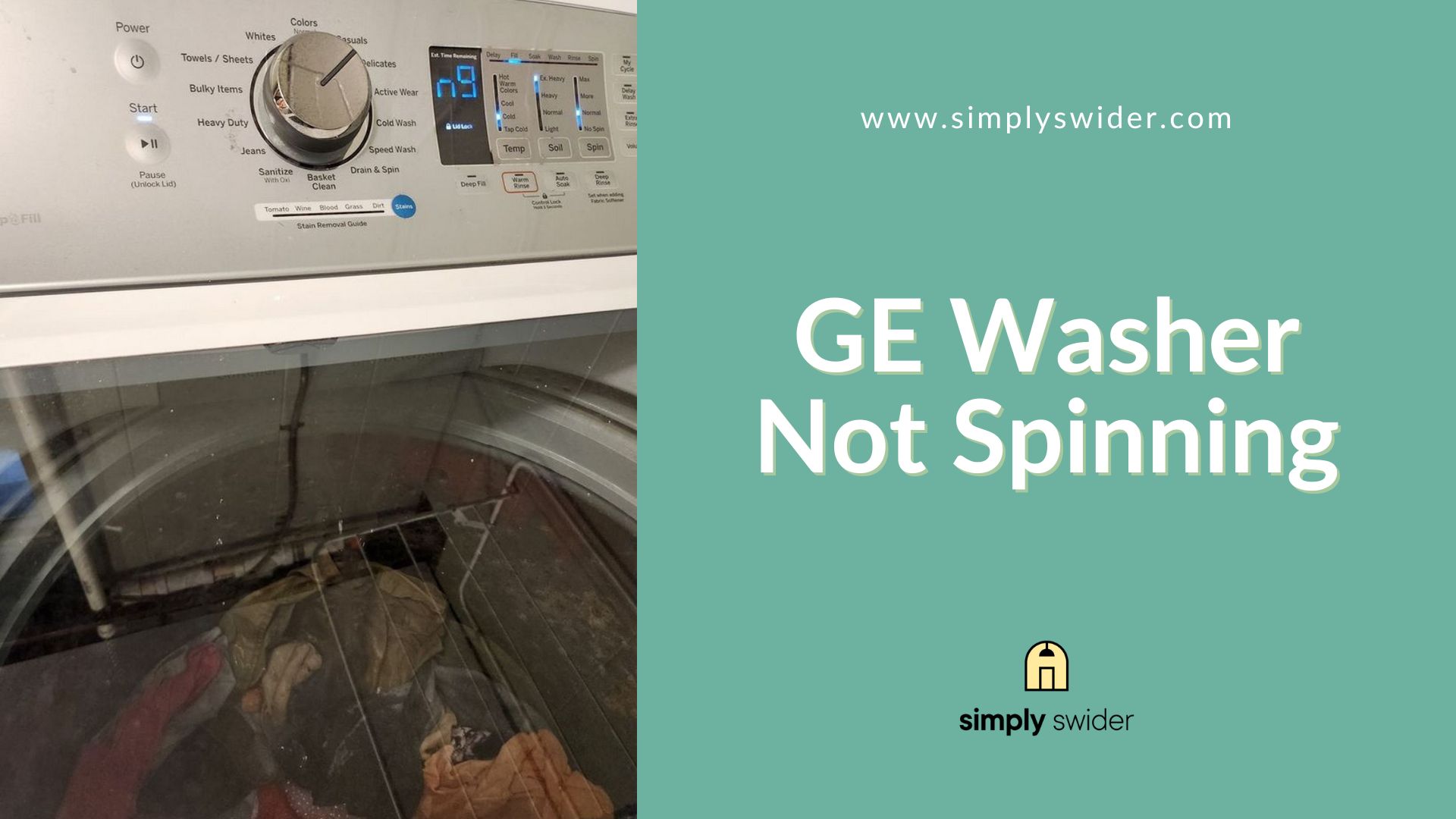Fact:
The centrifugal force generated by a spin cycle is essential to the washing machine’s washing process.
Sadly:
Some GE washers may run into an issue or malfunction that prevents the compartment from spinning during a wash or a spin cycle.
Expectedly:
Such a problem may be challenging to troubleshoot, especially when the user has no idea what could be preventing the tub from spinning.
Thankfully:
We’ve got you covered!
Here is a list of potential problems that could prevent a GE washer from spinning and some technical solutions.
Table of Contents
Why Your GE Washer Is Not Spinning
Your GE washer may refuse to spin if the load isn’t evenly distributed or the machine isn’t level. Other issues that could prevent it from spinning include a faulty lid switch, a bad drive belt, and a broken water level control. Thankfully, you can fix these problems quite easily.
1. Unevenly Distributed Wash Load
Now:
Loading your clothes is an important step in using your GE washer. You should pay attention to the ratio of washing fluid and fabric softener to the number of clothes loaded.
Sadly:
Your GE washer may not spin at all if there is a load imbalance.
You can remedy this by stopping the wash cycle and loading your clothes correctly.
You see:
The balance of your GE washer depends heavily on how you load your clothes. Be sure to arrange clothes evenly around the interior so your dryer can spin properly.
Hopefully, this solves the problem.
2. Unleveled Washer Placement
It is important to check the surface level when deciding where to place your GE washer.
You see:
An imbalance could lead to many issues that could damage your washer in the long run. One such issue is the prevention of your GE washer from spinning.
Thankfully:
One can easily tell when a washer is not on level ground.
It may sway from side to side when gently nudged and shake violently when it does spin.
Now:
Moving your GE washer to a better-leveled room or propping up the lacking side with a makeshift wedge should fix this problem.
Note:
Moving your washer to a different room would be a better long-term solution if the surface isn’t level.
3. Overloaded or Underloaded Washer
Conveniently:
The GE washer can handle a reasonable amount of clothes at once. This perk is one of the main draws of using a washing machine.
Sadly:
It is easy to overdo things when selecting the clothes one wishes to load at a time. Putting too many clothes into your GE washer would lead to a washer overload.
Conversely:
A user may have a limited amount of laundry to handle at a time and may end up underloading their GE washer.
Now:
The GE washer may have troubling spinning in both cases. One should go through the user manual to learn the appropriate load size.
Thankfully:
Removing or adding a few clothes would fix your machine’s spinning problem, allowing you to wash your clothes.
4. Clogged Drain Trap
Here’s the thing:
Lint is a given when working with clothes, and lint buildup left unattended could damage your GE washer.
Thankfully:
Your washer comes with a drain trap that prevents lint and other small debris from getting into the drain and clogging the machine.
Unfortunately:
If left for a while, the drain trap could develop a heavy debris buildup that will slow and eventually stop your GE washer from spinning.
However:
You could remedy this by cleaning the drain trap at least once a week. Now, the location of the drain trap varies depending on the model of the GE washer.
As such:
You can locate it by referring to the GE dryer manual.
Be sure to clean the trap properly before reinserting it and starting the wash cycle again.
5. Faulty Lid Switch
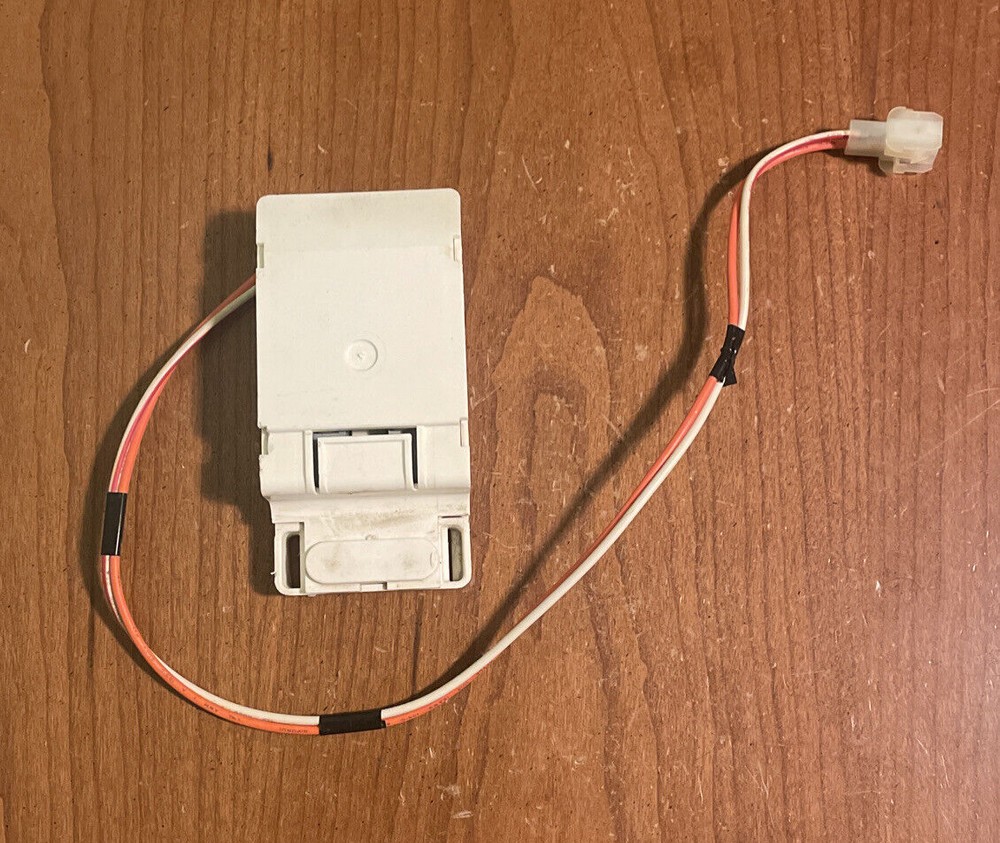
Look:
The lid switch is a failsafe strategically placed to prevent your GE washer from running while the lid is open. This feature is quite useful as it prevents a lot of accidents.
Sadly:
A faulty lid switch could prevent your GE washer from working entirely.
Fortunately:
One can easily replace this faulty part by following a few instructions. The tools required include a putty knife, a pair of wire strippers, and a quarter-inch nut driver.
Here’s what to do:
- Step 1: Unplug the GE washer from the wall.
- Step 2: Take the putty knife and slip it into the gap between the top and the front panel. Slide it to the far left until you feel an obstruction, and slip it above the spring.
- Step 3: Repeat this step for the right side, gently slide the front panel forward, lift it off the base, and set it aside.
- Step 4: Remove the exposed quarter-inch screws in the top corners of the front. Do the same for the screws securing the console.
- Step 5: Tilt the console forward and slightly to the right to disengage the mounting tabs.
- Step 6: Lift the front end of the top panel and gently slide it forward to disengage the safety tabs on the back.
- Step 7: Lift it and shift it just enough to the right to expose what is underneath.
- Step 8: Take the putty knife and depress the locking tab that keeps the lid switch in place.
- Step 9: Remove the top panel and set it aside. You should be able to see the lid switch and the mess of wires it is connected to.
- Step 10: Undo the clips holding the wires in place to give yourself some room to work with.
- Step 11: Take your wire cutters and cut the lid switch wires. Be sure to leave yourself enough wire length to work with.
- Step 12: Take the replacement lid switch and remove some wire coating at the bottom. Do the same where you would like to attach it.
- Step 13: Match the wire colors as you connect the wire and coat the connection with some electrical tape to be on the safe side.
Please:
Be careful when replacing the lid switch, and plug the washer back into the wall. Your GE washer should work just fine once you reassemble the machine.
6. Clogged Water Pump
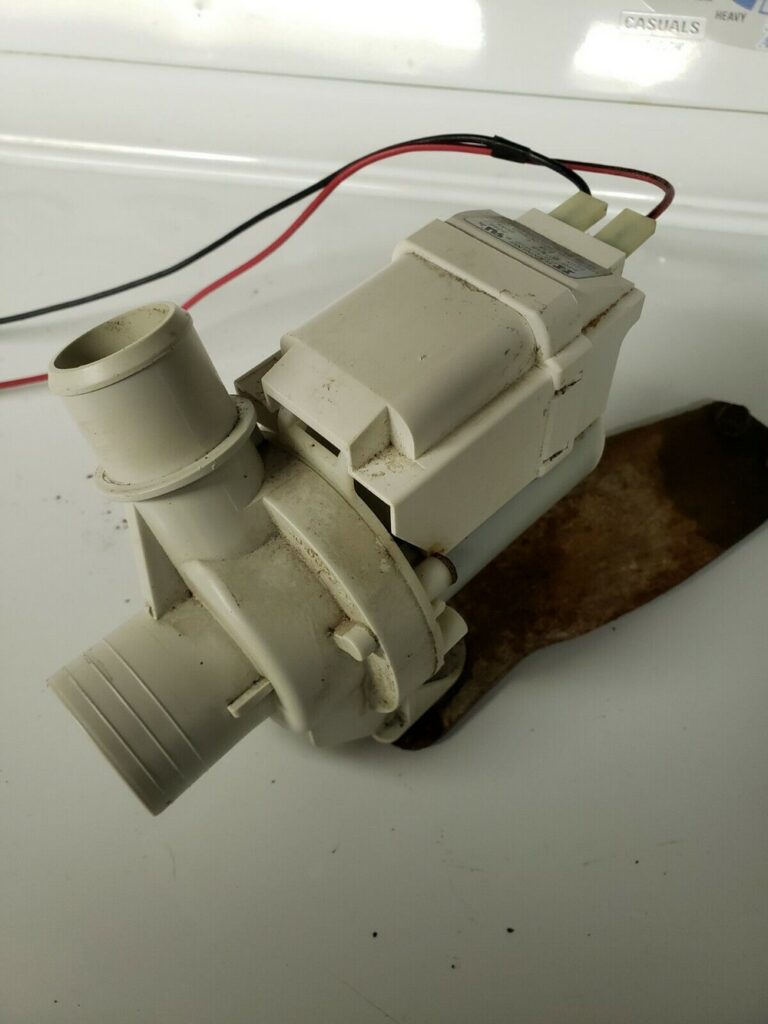
Now:
Potent as the drain trap is, it may not always catch all lint and debris from your laundry load.
Intuitively:
This is especially true when the GE washer has been working for a long time. A blockage could form in the pump as a result.
The thing is:
Your GE washer will not initiate a spin cycle if water hasn’t completely drained from the compartment.
Thankfully:
You can tell when the pump has an issue by listening closely. It may make an odd noise whenever the water is meant to be drained.
Now:
Unplug your machine and check the pump for blockage if this is the case. Be thorough when cleaning out any lint or debris you might find.
Subsequently:
Your GE washer should drain fine and allow the spin cycle to take effect.
7. Broken Drive Belt
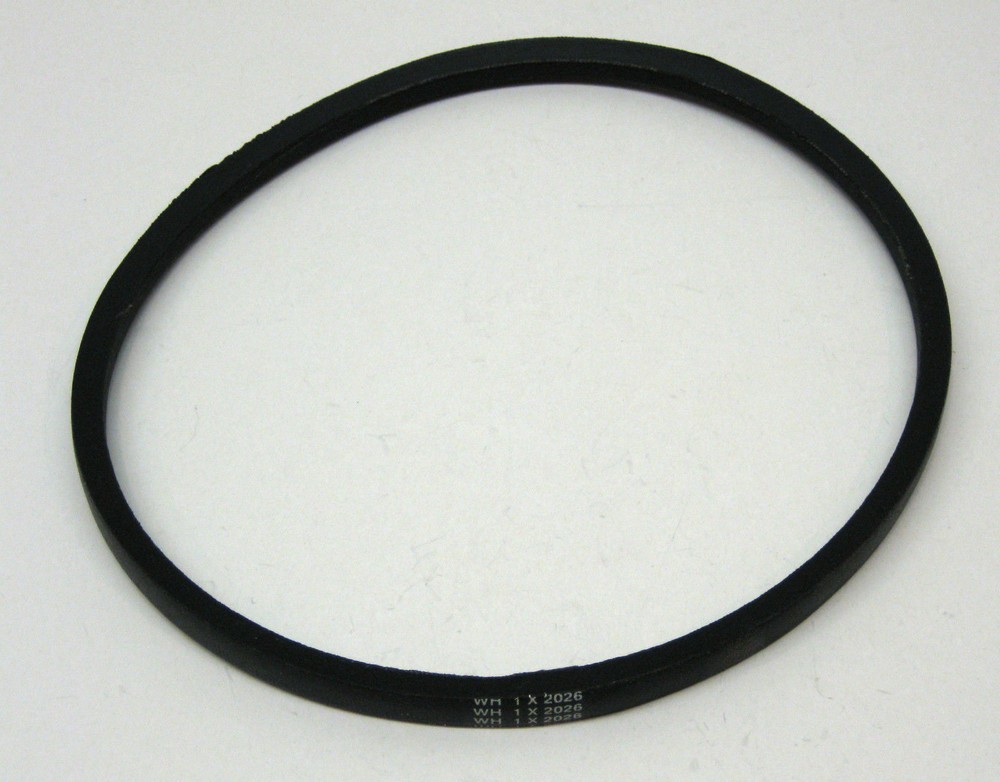
The drive belt and motor facilitate the rotating motion that turns the tub during agitation.
As such:
Your GE washer won’t spin if the belt is worn or damaged. This wear can happen over time and with frequent use.
Fortunately:
You can replace a damaged drive belt by following a few straightforward steps.
- Step 1: Unplug your washer from the power source.
- Step 2: Slide a putty knife into the top and front panel space and release the spring clips securing the front panel to the machine.
- Step 3: Tip the panel forward and lift it out of place. Put it aside so you have a clear view of the interior.
- Step 4: Reach for the motor underneath and remove the old, faulty drive belt.
- Step 5: With a belt install tool, and a zip tie, stretch out the new drive belt, so it slides into place.
Note:
Before replacing the front panel, remove the install tool and the zip tie.
Your GE washer should spin just fine during the wash and spin cycles.
Models Most Affected
Popularly:
The GE washer brand is reliable and resilient.
However:
A GE washer may stop spinning for quite a few reasons. While this is true for all GE washers, a few models are commonly associated with this problem.
1. GE Top Load Washer
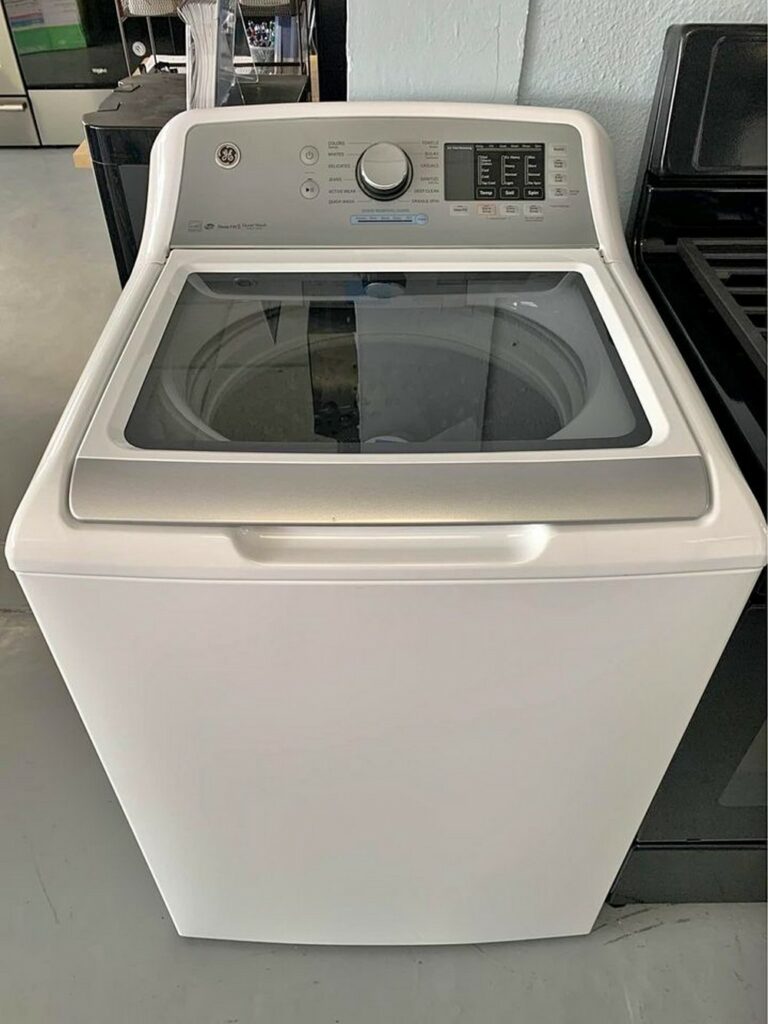
Fact:
The Top Load models are efficient and affordable. They can handle an impressive amount of load and often have a good balance.
However:
They may stop spinning if the belt drive gets damaged.
Fortunately:
One can easily troubleshoot this issue thanks to the machine’s architecture. It’s often as simple as sliding off the front panel.
2. GE Front Load Washer
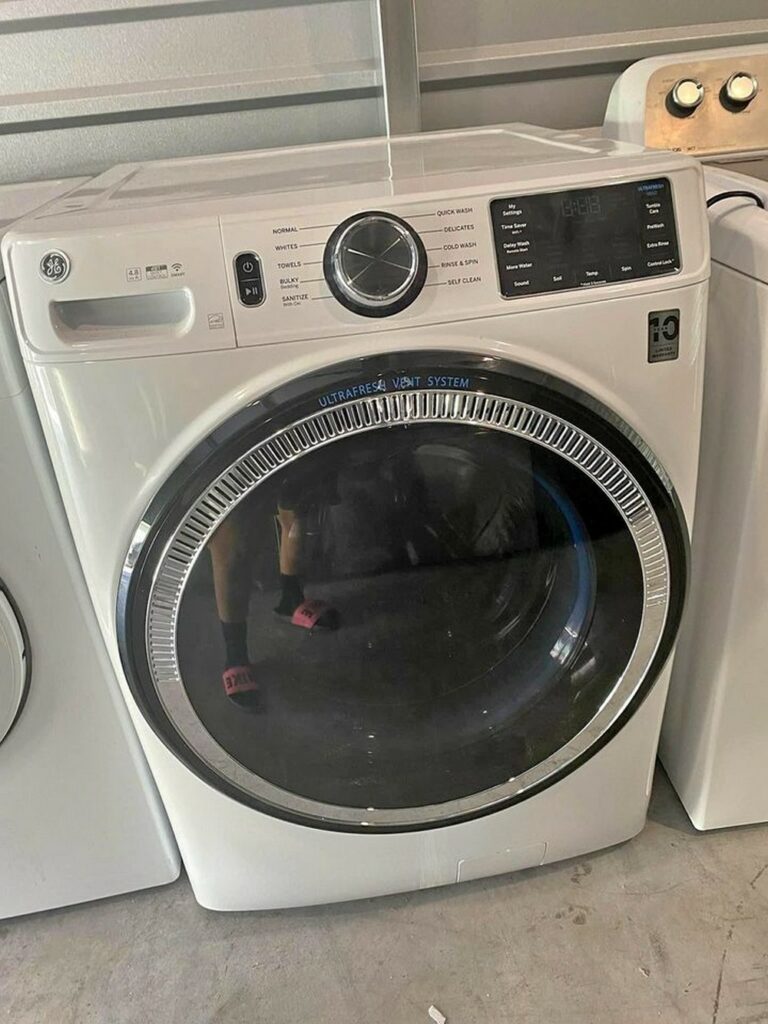
The front-load models are commonly used in laundromats. They are sturdy and can sometimes stack on top of each other.
Unfortunately:
The front load washer accumulates lint much more quickly than its top load counterpart. The lint trap needs to be cleaned more often to prevent a build-up.
We know:
A large enough debris build-up could prevent your GE washer from spinning.
3. GE Washer GTW680BSJ3WS
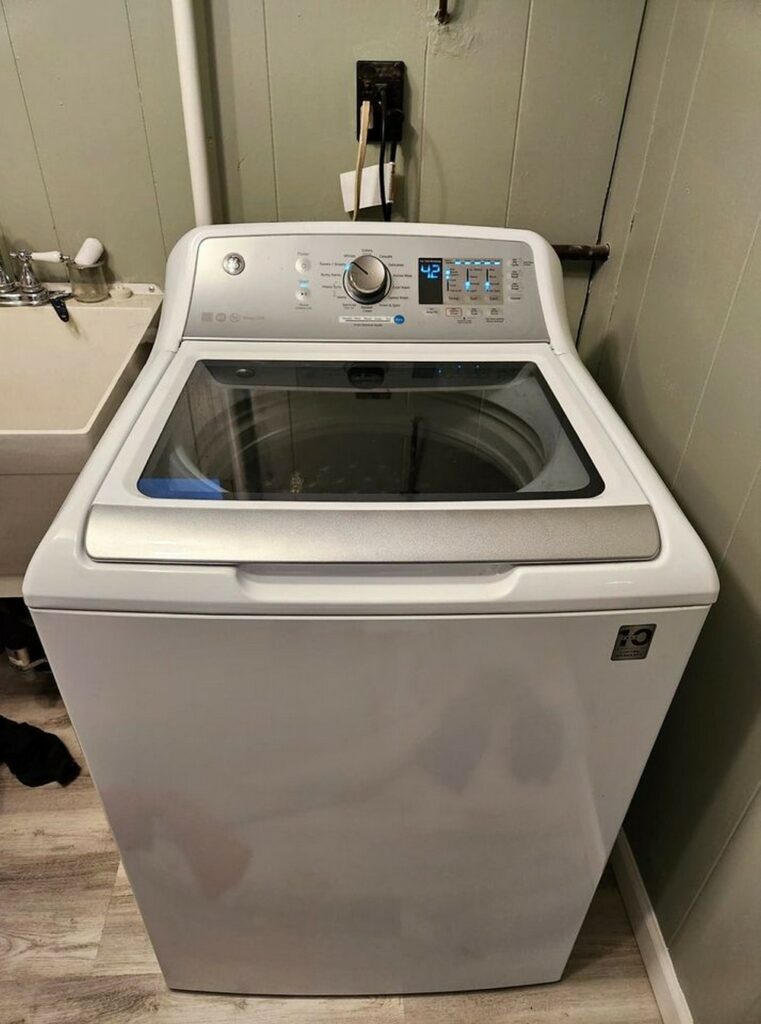
This is a newer top-loader model. It comes equipped with some impressive settings and functions.
Sadly:
The lid switch may develop a fault that inhibits the tub from agitating. You can troubleshoot this issue by following the detailed instructions above.
4. GE Washer and Dryer Combo
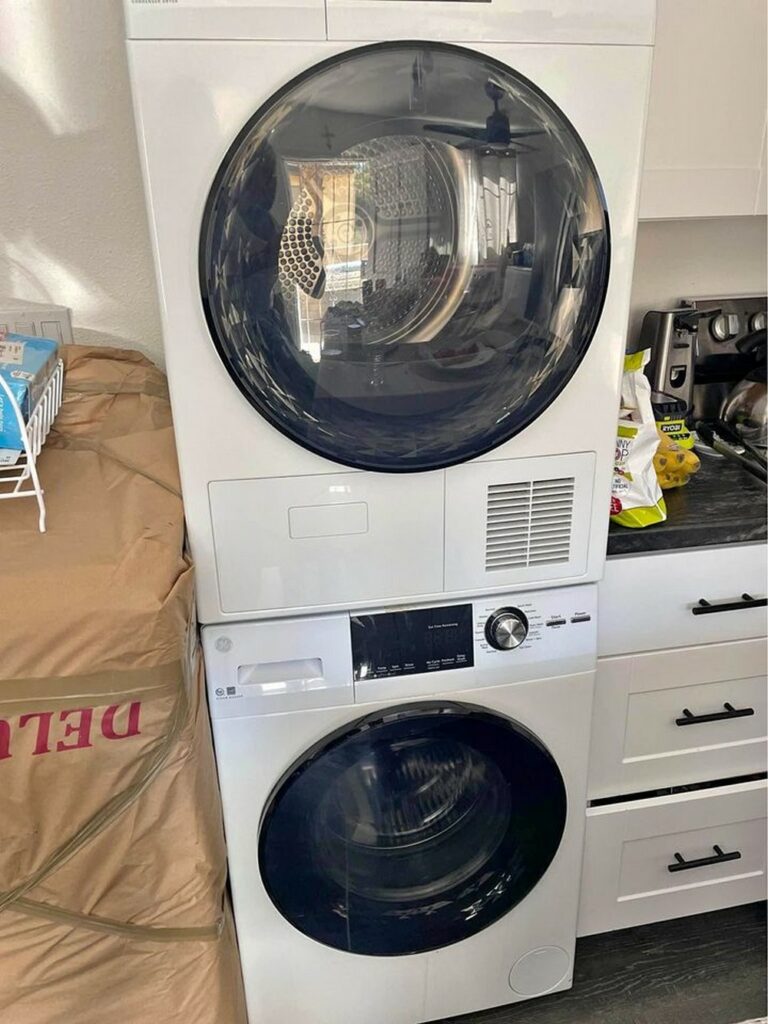
The GE washer and dryer stacked combo is incredibly handy and helps boost efficiency in the washing process.
Sadly:
They could both develop faults that stop them from spinning. And while they share some solutions, the dryer isn’t built exactly like the washer.
Now:
Other GE washer models that could suddenly stop spinning include the GE Hydrowave washer and the GE stackable washer.
Conclusion
Ultimately:
You need your washer to spin. It’s a core function in both the washing and drying process.
As such:
It would be a great inconvenience if your GE washer suddenly stopped spinning.
Thankfully:
You can troubleshoot this problem by examining the signs and working through the following list of common causes.
- Unevenly distributed wash load.
- Unleveled washer placement.
- Overloaded or underloaded washer.
- Clogged drain trap.
- Faulty lid switch.
- Clogged water pump.
- Broken driver belt.
Work your way through the obvious until the answer reveals itself. Your washer will work as good as new once you have remedied the problem.
Finally:
Did you find this guide helpful? Did we neglect to mention a vital troubleshooting method? Feel free to let us know in the comments below.
Frequently Asked Questions
Your GE Washer is likely not spinning because of a faulty lid switch which prevents the washer from operating while the lid is open.
Replace the faulty switch, and it should work just fine.
You may need to set a longer spin cycle duration. Be sure to set the spin cycle according to how dry you want your clothes.
Your GE washer may be spinning slowly because the lint trap is full, which could prevent the tub from moving swiftly.
Cleaning out the trap may solve your problem.
Select the Start/Pause button to interrupt the wash cycle and set the machine to Drain and Spin. Select the Start/Pause button again, and the washer should start spinning.

